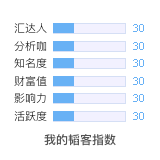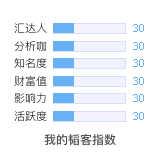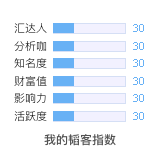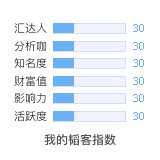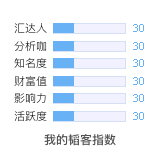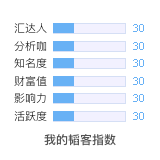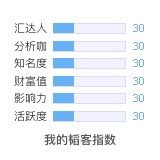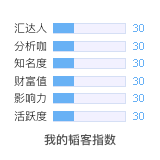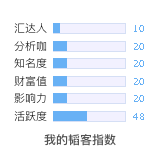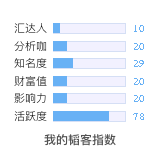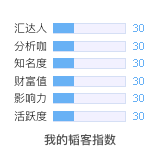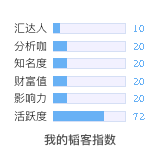[讨论]世界货币及其简称
世界货币及其简称
English country names and code elements [国家名称的英文标识及其简写]
World Currencies and Abbreviations[世界货币及其简称]
Introduction
There are many different currencies in use in the world. A few have special symbols to represent them but most use the first letter of the currency name. Although the first letter of the currency name works well when describing a local currency, in an international context it leads to confusion. Does P20 mean 20 Pesetas, Pesos, and Pounds, Pataca, Pa'anga or something else? And if it means 20 Pesos, are they Argentinian Pesos, Bolivian Pesos, Chilean Pesos, Colombian Pesos, or some other variety of Peso? For this reason we need an unambiguous, unique, standardized (and preferably short) way of referring to each currency.
Although there are special symbols for some currencies, many of them cause problems when used in e-mail, news postings or on web pages. For this reason we need a method of representation that passes unchanged and without difficulty in all of these media.
[/color] The solution, long used by the international banking community, is the ISO 4217 set of currency abbreviations.
The solution, long used by the international banking community, is the ISO 4217 set of currency abbreviations.
ISO 4217
ISO 4217 (Codes for the Representation of Currencies and Funds) defines three-letter abbreviations for world currencies. The general principle used to construct these abbreviations is to take the two-letter abbreviations defined in ISO 3166 (Codes for the Representation of Names of Countries) and append the first letter of the currency name (e.g., USD for the United States Dollar).
In the case of currencies defined by supra-national entities, ISO 4217 assigns two-letter entity codes starting with "X" to use in place of country codes (e.g., XCD for the Central Caribbean Dollar).
Although ISO standards are not, in general, available on line, the country codes of ISO 3166 can be found at iso-3166-code-lists.
When to Use Currency Abbreviations
Depending upon whether you are using e-mail, news or the web, some currency symbols may be used but many others should not be used. The long answer is rather complicated. The short answer is:
In e-mail and news, the only currency symbol that may safely be used is $ (the dollar symbol). To express a value in any other currency you should use the ISO 4217 three-letter currency abbreviation (e.g., GBP 10 for £10).
In HTML, the only currency symbols that may safely be used are: $ (dollar), ¢ (cent), £ (pound/punt/lira), ¥ (yen) and ¤ (generic currency). Enter all but the dollar symbol by using HTML numeric character codes: ¢ for ¢, £ for £, ¥ for ¥ and ¤ for ¤. (Note that the symbol for the lira is not in common use.) To express a value in any other currency you should use the ISO 4217 three-letter currency abbreviation (e.g., GBP 10 for £10).
The short answer simplifies the situation somewhat, but if you follow it you will never be wrong. Ignore the advice (and that given in the long answer) and you will cause problems for others, if not also for yourself.
Common Currency Abbreviations
The currency abbreviations that are most commonly seen, and required in E-mail and news, are those which have symbols in the ISO 8859/1 (Latin 1) character set. These are:
USD
United States Dollar ($). The only currency symbol that can safely be used in E-mail and news.
GBP
Pound Sterling [United Kingdom Pound] (£)
The use of "GB" for "The United Kingdom of Great Britain and Northern Ireland" surprises some people. However, the United Kingdom and the Ukraine both wanted "UK" so rather than start World War III over the matter, the United Kingdom was assigned "GB" and the Ukraine was assigned "UA."
UKP
An incorrect abbreviation for the Pound Sterling (use GBP instead)
ITL
Italian Lira (£)
JPY
Japanese Yen (¥)
Also found in the DOS/Windows 3 CP 1252 character set (which covers all valid ISO 8859/1 characters) is the symbol for the Dutch Guilder (an "f" with a hook). This character is assigned to a position reserved for a control code and it is incorrect to use this character to represent the guilder symbol in any Internet medium - it is always wrong to use this symbol from the CP 1252 character set on the Internet. Use the abbreviation NLG instead.
Microsoft have recently amended the DOS/Windows CP l252 character set to include the Euro currency symbol. If you have fonts which conform to this extended version of CP 1252 it is incorrect to use this character to represent the Euro symbol in any Internet medium - it is always wrong to use this symbol from the extended CP 1252 character set on the Internet. Use the abbreviation EUR instead.
Changing Countries and Currencies
The world is in constant flux.
Countries change their names or split into two or more smaller countries or merge with another country. Some "countries" given country codes by ISO 3166 are colonies or dependencies of other countries.
Currencies are revalued without a change of name or revalued with a change of name or change name without being revalued. Countries may adopt the currency of another country or stop using the currency of another country and create their own currency. In some countries other currencies, besides the official currency, circulate and are accepted.
Some countries (mainly colonies and dependencies of other countries) have currencies which are theoretically different from their parent country but which are actually pegged at a 1:1 exchange ratio. All that really changes is the wording and pictures on the banknotes. E.g., the Falkland Pound (FKP) is theoretically a different currency to the Pound Sterling (GBP) but in practice is pegged at a 1:1 exchange ratio.
In these pages, currencies are listed against a particular country where they circulate, whether those currencies are the official currency of a country or whether they are unofficially acceptable. Because of transitions from one currency to another, currencies are also listed against a particular country if they have circulated in that country in the recent past.
The following European Union countries adopted the Euro at the start of 2002: Austria, Belgium, Finland, France, Germany, Greece, Italy, Ireland, Luxembourg, The Netherlands, Portugal and Spain. Other countries which were previously using one of the superseded currencies also adopted the Euro. Slovenia adopted the Euro at the start of 2007 and Cyprus and Malta at the beginning of 2008.
Use of Tables
The nature of the information in these pages is such that the only feasible option for displaying it was to use HTML tables. Since some browsers cannot display tables, three tricks (all valid HTML) have been used to ensure that the information should be readable (although not particularly pretty) on such browsers.
Browsers which can display tables will have to download the whole file (most of these are quite large so this may take a little while) and then have a think about how best to fit the information into columns before they can start to display the information. This means that you will not see the information displayed immediately - please be patient.
Disclaimer
报关币别码
序号 名称
CNY 人民币元
ATS 奥地利先令
AUD 澳大利亚元
BEF 比利时法郎
CAD 加拿大元
CHF 瑞士法郎
DEM 西德马克
DKK 丹麦克郎
DZD 阿尔及利亚第纳尔
FIM 芬兰马克
FRF 法国法郎
GBP 英镑
GHC 加纳塞地
GNS 几内亚西里
HKD 港币
IQD 伊拉克第纳尔
IRR 伊朗里亚尔
ITL 意大利里拉
JOD 约旦第纳尔
JPY 日元
KWD 科威特第纳尔
MOP 澳门元
MYR 马来西亚元
NLG 荷兰盾
NOK 挪威克郎
NPR 尼泊尔卢比
NZD 新西兰元
PHP 菲律宾比索
PKR 巴基斯坦卢比
RMB 人民币元
SEK 瑞典克郎
SGD 新加坡元
SLL 塞拉利昂利昂
SUR 卢布(RBS)
THB 泰国株
TZS 坦桑尼亚先令
USD 美元
ZMY 折美元
EUR 欧元
[color=#000000]ATS 奥地利先令
World Currencies and Abbreviations[世界货币及其简称]
Introduction
There are many different currencies in use in the world. A few have special symbols to represent them but most use the first letter of the currency name. Although the first letter of the currency name works well when describing a local currency, in an international context it leads to confusion. Does P20 mean 20 Pesetas, Pesos, and Pounds, Pataca, Pa'anga or something else? And if it means 20 Pesos, are they Argentinian Pesos, Bolivian Pesos, Chilean Pesos, Colombian Pesos, or some other variety of Peso? For this reason we need an unambiguous, unique, standardized (and preferably short) way of referring to each currency.
Although there are special symbols for some currencies, many of them cause problems when used in e-mail, news postings or on web pages. For this reason we need a method of representation that passes unchanged and without difficulty in all of these media.
[/color] The solution, long used by the international banking community, is the ISO 4217 set of currency abbreviations.
The solution, long used by the international banking community, is the ISO 4217 set of currency abbreviations.
ISO 4217
ISO 4217 (Codes for the Representation of Currencies and Funds) defines three-letter abbreviations for world currencies. The general principle used to construct these abbreviations is to take the two-letter abbreviations defined in ISO 3166 (Codes for the Representation of Names of Countries) and append the first letter of the currency name (e.g., USD for the United States Dollar).
In the case of currencies defined by supra-national entities, ISO 4217 assigns two-letter entity codes starting with "X" to use in place of country codes (e.g., XCD for the Central Caribbean Dollar).
Although ISO standards are not, in general, available on line, the country codes of ISO 3166 can be found at iso-3166-code-lists.
When to Use Currency Abbreviations
Depending upon whether you are using e-mail, news or the web, some currency symbols may be used but many others should not be used. The long answer is rather complicated. The short answer is:
In e-mail and news, the only currency symbol that may safely be used is $ (the dollar symbol). To express a value in any other currency you should use the ISO 4217 three-letter currency abbreviation (e.g., GBP 10 for £10).
In HTML, the only currency symbols that may safely be used are: $ (dollar), ¢ (cent), £ (pound/punt/lira), ¥ (yen) and ¤ (generic currency). Enter all but the dollar symbol by using HTML numeric character codes: ¢ for ¢, £ for £, ¥ for ¥ and ¤ for ¤. (Note that the symbol for the lira is not in common use.) To express a value in any other currency you should use the ISO 4217 three-letter currency abbreviation (e.g., GBP 10 for £10).
The short answer simplifies the situation somewhat, but if you follow it you will never be wrong. Ignore the advice (and that given in the long answer) and you will cause problems for others, if not also for yourself.
Common Currency Abbreviations
The currency abbreviations that are most commonly seen, and required in E-mail and news, are those which have symbols in the ISO 8859/1 (Latin 1) character set. These are:
USD
United States Dollar ($). The only currency symbol that can safely be used in E-mail and news.
GBP
Pound Sterling [United Kingdom Pound] (£)
The use of "GB" for "The United Kingdom of Great Britain and Northern Ireland" surprises some people. However, the United Kingdom and the Ukraine both wanted "UK" so rather than start World War III over the matter, the United Kingdom was assigned "GB" and the Ukraine was assigned "UA."
UKP
An incorrect abbreviation for the Pound Sterling (use GBP instead)
ITL
Italian Lira (£)
JPY
Japanese Yen (¥)
Also found in the DOS/Windows 3 CP 1252 character set (which covers all valid ISO 8859/1 characters) is the symbol for the Dutch Guilder (an "f" with a hook). This character is assigned to a position reserved for a control code and it is incorrect to use this character to represent the guilder symbol in any Internet medium - it is always wrong to use this symbol from the CP 1252 character set on the Internet. Use the abbreviation NLG instead.
Microsoft have recently amended the DOS/Windows CP l252 character set to include the Euro currency symbol. If you have fonts which conform to this extended version of CP 1252 it is incorrect to use this character to represent the Euro symbol in any Internet medium - it is always wrong to use this symbol from the extended CP 1252 character set on the Internet. Use the abbreviation EUR instead.
Changing Countries and Currencies
The world is in constant flux.
Countries change their names or split into two or more smaller countries or merge with another country. Some "countries" given country codes by ISO 3166 are colonies or dependencies of other countries.
Currencies are revalued without a change of name or revalued with a change of name or change name without being revalued. Countries may adopt the currency of another country or stop using the currency of another country and create their own currency. In some countries other currencies, besides the official currency, circulate and are accepted.
Some countries (mainly colonies and dependencies of other countries) have currencies which are theoretically different from their parent country but which are actually pegged at a 1:1 exchange ratio. All that really changes is the wording and pictures on the banknotes. E.g., the Falkland Pound (FKP) is theoretically a different currency to the Pound Sterling (GBP) but in practice is pegged at a 1:1 exchange ratio.
In these pages, currencies are listed against a particular country where they circulate, whether those currencies are the official currency of a country or whether they are unofficially acceptable. Because of transitions from one currency to another, currencies are also listed against a particular country if they have circulated in that country in the recent past.
The following European Union countries adopted the Euro at the start of 2002: Austria, Belgium, Finland, France, Germany, Greece, Italy, Ireland, Luxembourg, The Netherlands, Portugal and Spain. Other countries which were previously using one of the superseded currencies also adopted the Euro. Slovenia adopted the Euro at the start of 2007 and Cyprus and Malta at the beginning of 2008.
Use of Tables
The nature of the information in these pages is such that the only feasible option for displaying it was to use HTML tables. Since some browsers cannot display tables, three tricks (all valid HTML) have been used to ensure that the information should be readable (although not particularly pretty) on such browsers.
Browsers which can display tables will have to download the whole file (most of these are quite large so this may take a little while) and then have a think about how best to fit the information into columns before they can start to display the information. This means that you will not see the information displayed immediately - please be patient.
Disclaimer
报关币别码
序号 名称
CNY 人民币元
ATS 奥地利先令
AUD 澳大利亚元
BEF 比利时法郎
CAD 加拿大元
CHF 瑞士法郎
DEM 西德马克
DKK 丹麦克郎
DZD 阿尔及利亚第纳尔
FIM 芬兰马克
FRF 法国法郎
GBP 英镑
GHC 加纳塞地
GNS 几内亚西里
HKD 港币
IQD 伊拉克第纳尔
IRR 伊朗里亚尔
ITL 意大利里拉
JOD 约旦第纳尔
JPY 日元
KWD 科威特第纳尔
MOP 澳门元
MYR 马来西亚元
NLG 荷兰盾
NOK 挪威克郎
NPR 尼泊尔卢比
NZD 新西兰元
PHP 菲律宾比索
PKR 巴基斯坦卢比
RMB 人民币元
SEK 瑞典克郎
SGD 新加坡元
SLL 塞拉利昂利昂
SUR 卢布(RBS)
THB 泰国株
TZS 坦桑尼亚先令
USD 美元
ZMY 折美元
EUR 欧元
[color=#000000]ATS 奥地利先令
发表于:2011-10-21 09:43只看该作者
2楼
沙发之
:044: :044: :044:
缺知少识万古愁、莫叹无智不胜秋
发表于:2011-10-21 12:48只看该作者
4楼
“顺势有意外惊喜,逆势有突发厄运”
发表于:2011-10-21 15:39只看该作者
5楼



韬客社区www.talkfx.co
发表于:2011-10-21 15:47只看该作者
6楼
基本但重要:014:
韬客社区www.talkfx.co
发表于:2011-10-21 15:48只看该作者
7楼
还真有些没见过的。
有容乃大,无欲则刚。
理性与人性的博弈。
发表于:2011-10-21 15:57只看该作者
8楼
英文的看不懂
我不在做汇,就在赶往工地搬砖的路上。。。
发表于:2011-10-21 16:02只看该作者
9楼
RMB 人民币元
不是CNY吗
韬客社区www.talkfx.co
发表于:2011-10-21 18:40只看该作者
10楼
人民币就是人民币,怎么还元?
就跟说港币元,英镑元一样奇怪
做好资金管理,有点耐心,滴水石穿
发表于:2011-10-23 05:12只看该作者
12楼
怎么没有斯里兰卡、毛里求斯的?






